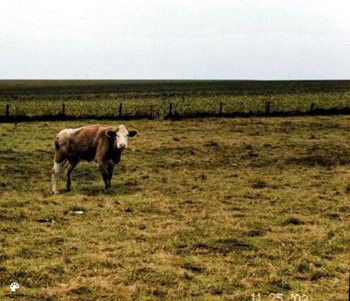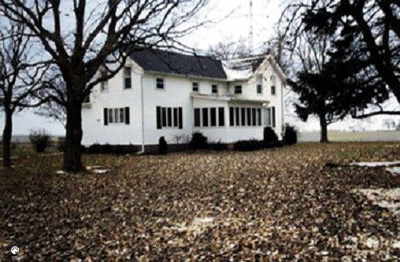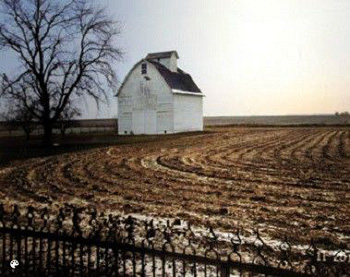The Fourth Generation
Click to print pdf version of web page
In the 1950's, Alfred installed indoor plumbing, a telephone, and a
furnace. Also during this time, the windmill was dismantled, as well as
the coalhouse and brooder house. The family installed screens on the
front porch. The fence surrounding the entire Bauman farm was torn down
because there were fewer animals. Alfred and Berniece only had two kids
and spoke only English. The daily and yearly routines remained as
strenuous until the early 1960's, in which farm chores decreased since
cows were the only animals present. The two children, Duane and
Diane, were the first members of the Baumann family to attend college
as Alfred persuaded them to leave the farm. Alfred realized that large
farms were more significant to the American economy. As in Figure B,
the average size of farms greatly increased. In 1970, only about five
percent of the labor force were farmers; thus, there were fewer farms
and farmers. The future of the Baumann farm seemed uncertain.
The fourth generation (Duane Baumann and his family) does not live on
the farm or even farm the land themselves.

Shown above from the left is Rebecca Baumann, Berneice Baumann, Diane Schrock holding her daughter Salissa,
Nancy Baumann, Duane Baumann, Shannon Schrock. At the top rear is Alfred Baumann.
Currently, the farmland's soybeans and corn are farmed by a family
friend who farms more than a thousand acres. Tractors, plows, combines
are consistently more powerful. Occasionally, the farm has beef cows
that graze on the small, one-acre pasture, as shown in below.
 The only buildings standing are the farmhouse, barn, garage, and the unused corn crib and tool and machine shed. Due to deterioration, the front porch no longer exists on the farmhouse.
The only buildings standing are the farmhouse, barn, garage, and the unused corn crib and tool and machine shed. Due to deterioration, the front porch no longer exists on the farmhouse.
Duane's family lives in St. Louis, Missouri, and receives the income
from selling the two crops. This generation decided to turn to cash
farming and pursue other occupations which would make higher salaries.

The Baumann generations clearly revealed significant changes in
production, landscape, and daily life due to innovation in technology
beginning in the Industrial Revolution.
The
Baumann farm was completely changed and affected in the beginning of
the third generation. The vastly improved production was primarily
based on the introduction of new machinery, insecticides, hybrid corn,
and chemical fertilizer. Farming also became more individualized with
the use of tractors, for farmers no longer have to work in groups. The
land and farm itself depended first on tile draining and then on the
new and improved technology.
Daily life was improved by the installation of electricity and plumbing
and the installation of grocery stores. These factors of enhanced
technology greatly transformed the Baumann farm and the life of each
generation. Unfortunately, as technology progressed and improved so
consistently and the economy became more dependent on manufacturing,
the Baumann farm no longer needed to be occupied. Thus, another farmer
cultivates the land.
Alfred died in 1980 and his daughter Diane died in 1992: her children Shannon and
Steffen live in northern Indiana and Salissa in Tampa, Florida. Their son, Duane,
lives in St. Louis: his children Bridget resides in Scottsdale, Arizona, Rebecca in Orlando, Florida
and Brittany as a student in Washington DC.
Sadly enough, the Baumann family no longer lives
on the farm; only memories remain alive.
 The author circa 1998, Brittany Baumann of the fifth generation, in the spirit of her ancestors.
The author circa 1998, Brittany Baumann of the fifth generation, in the spirit of her ancestors.  Continue to next page Back to previous page
Continue to next page Back to previous page